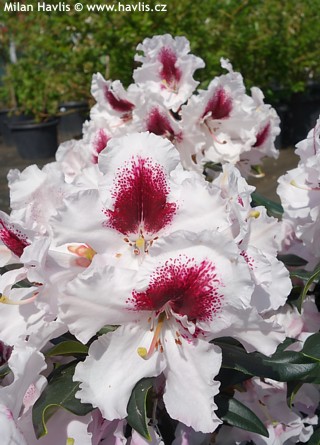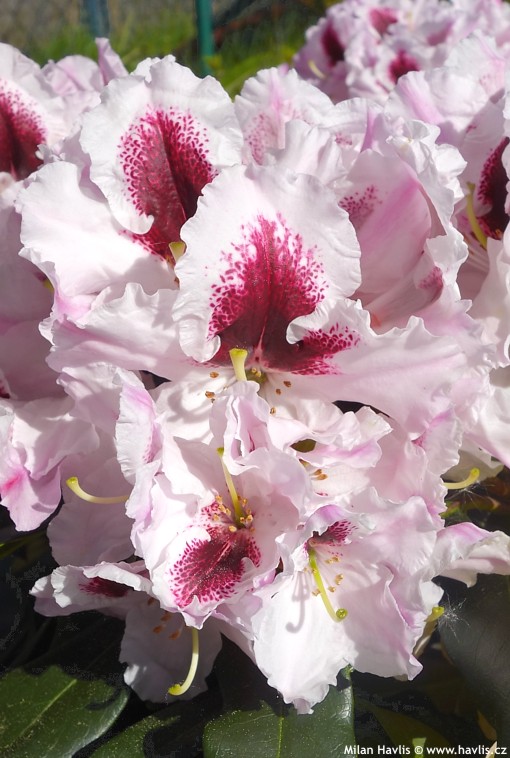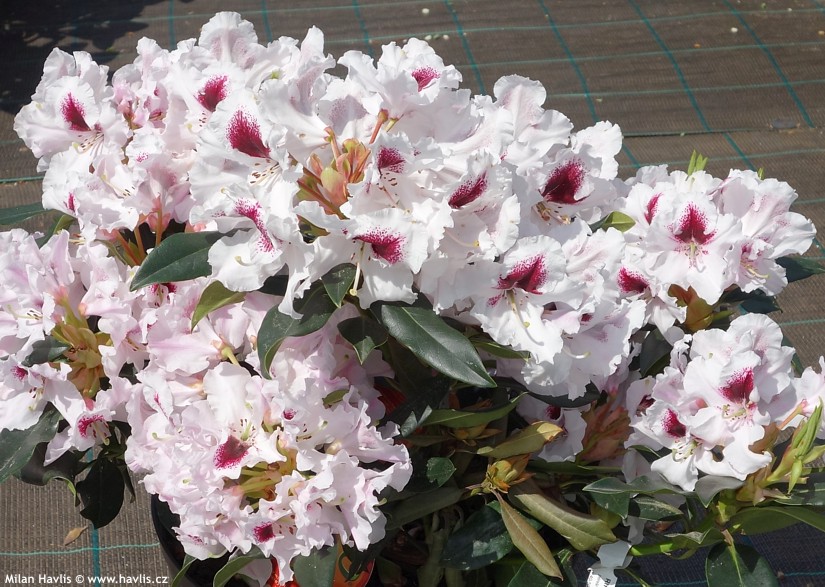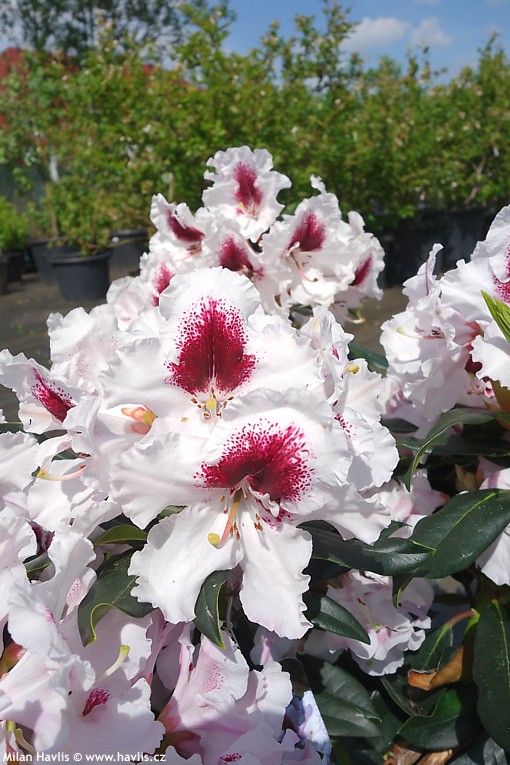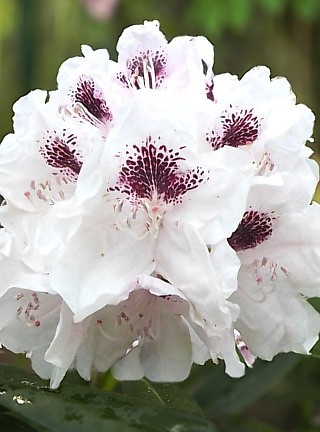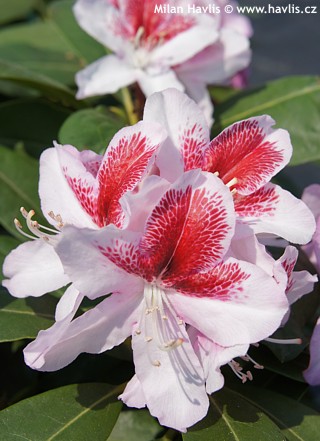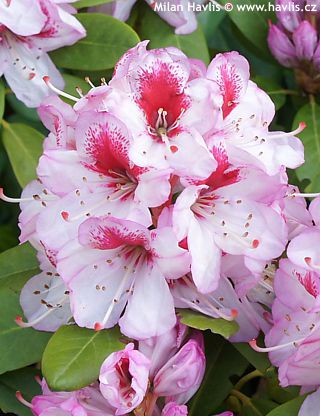Rhododendron 'SAPPORO' rhododendron
Rhododendron
Rhododendrons are reliable, beautifully flowering, evergreen shrubs of variable origin: S.W. China, Himalayas, Northern America, and even Europe. The original species were hybridized several times for better performance so in the 1950´s there were more than 10,000 cultivars registered, and the number keeps increasing.
Sapporo is another very beautiful rhododendron variety bred by Hans Hachmann in 1979. It has large, white flowers with a deep burgundy red blotch and dots on the upper lip, and a few light purple red stripes which disappear as the flower matures. Blooming begins in mid May and continues until the first decade of June. Evergreen leaves are leathery, deep green, narrowly elliptic, and partly glossy.
For a better looking shrub dead-head where possible. The roots are shallow, spreading to sides in search for nutrients. Never plant them too deep. The soil has to be acidic (pH 4.5-5.5), rich in humus, cool and always moist. Ideal soil mixture is peat with lime-free, light garden soil topped with leave-mould. Fully hardy to min. -27°C (USDA zone 5b), but very probably more.
Last update 26-10-2015

































